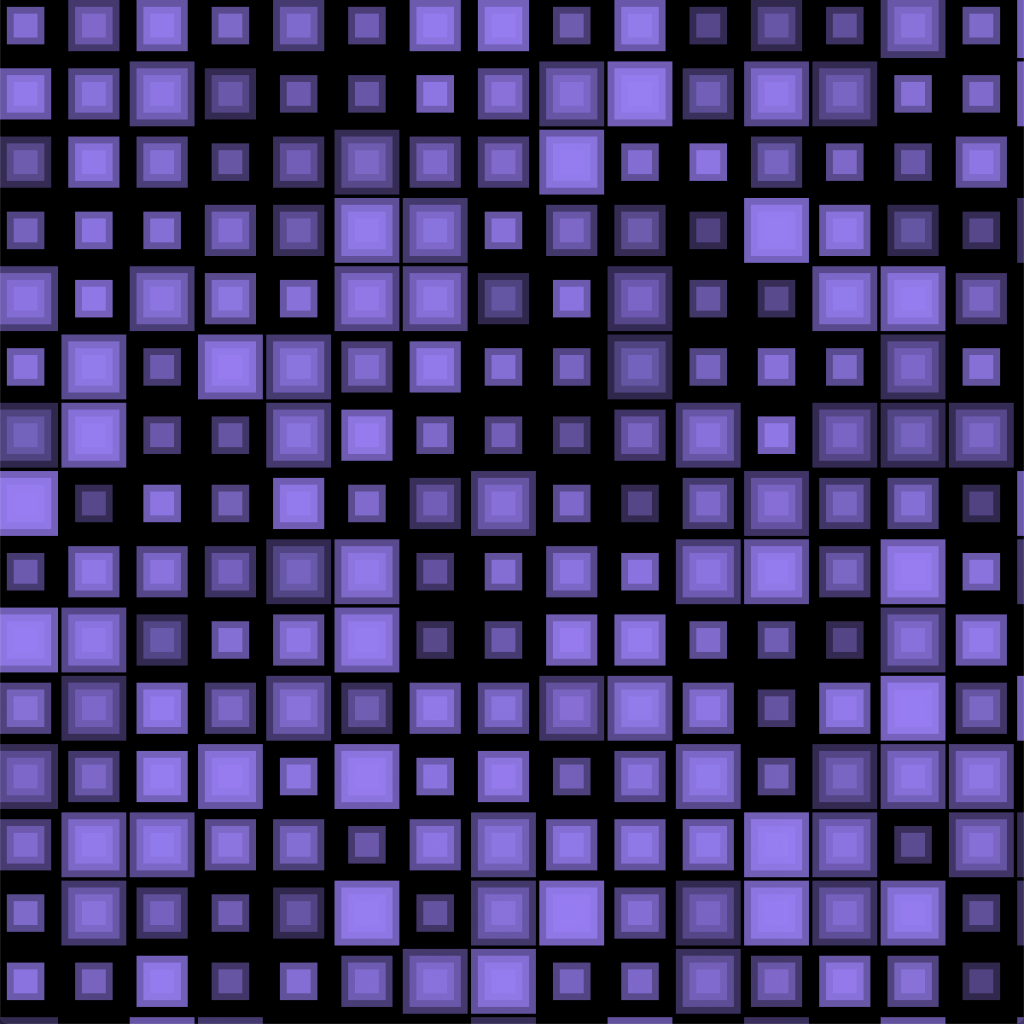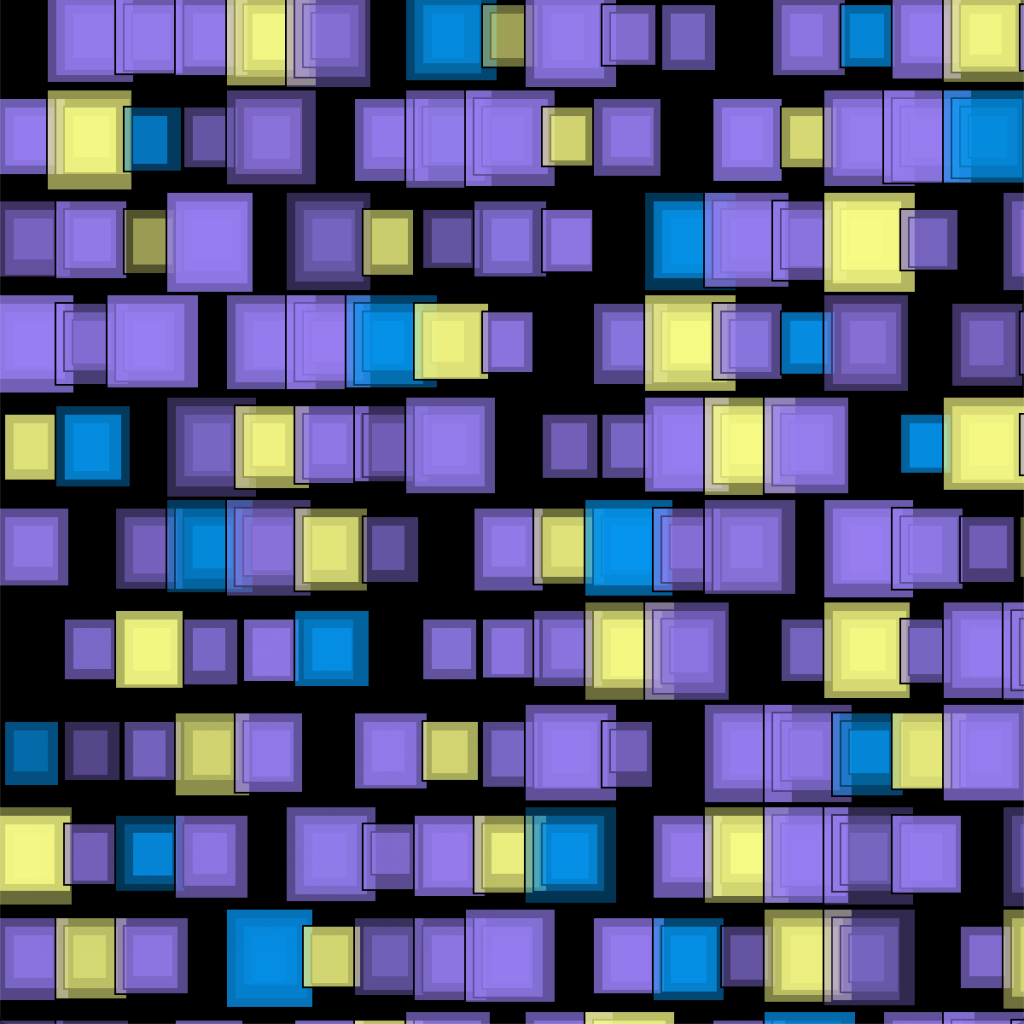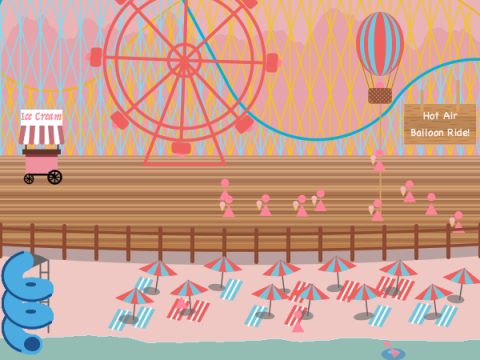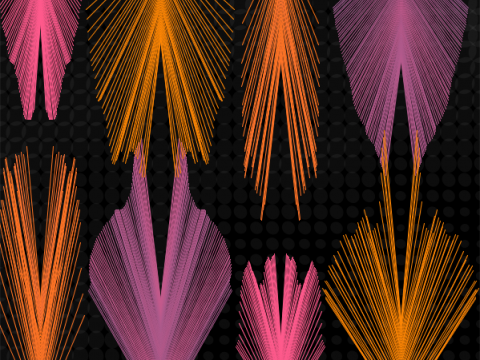




Generating patterns through computer programming gives you the feeling that you are cheating. I am not sure who or what you are cheating, but making different iterations of designs in seconds pushes artistic creativity to a new level. When I begin a new code, I have a general idea of what I am trying to put on the screen. I lay out the bare bones first and then add as I go.
For this assignment, we took inspiration from Vera Molnar, an early computer artist who uses repetition and randomness to create patterns. She pays close attention to small changes to make beautiful art, which is also known as gradualism.
To begin this assignment, I started with the bones and created rows of evenly spaced squares containing more squares inside. I enjoyed the simplicity but wanted to create more depth, so I had the squares overlap by the inner squares becoming larger. The look of the squares was more intriguing, but I did not want the overlap anymore. My next change would be making gaps in the pattern using modulo. Lastly, I kept the gaps, added some more color, and went back to overlapping the squares but only in each row.
I enjoy working gradually. Paying closer attention to minor changes will eventually end with one or multiple thought out pieces of art. I also believe gradualism is something we see and use in all sorts of artistic creations.
I believe that repetition can be creative. Creating an aesthetically pleasing pattern that does not bring discomfort to the user takes meaning. While working on my design, I felt bothered when the row of squares started on the edge. I needed to center the pattern so that the beginning square and the last square in the row were evenly distanced from the border. Color is something that needs to be taken into consideration while creating a pattern. Color can invoke a feeling, and the other colors you pair must be well thought out to create art pleasing to the eye.
I see the idea of gradualism crossover into using photoshop to edit photos. Each change made to an image must bring a positive effect to the picture. When you make one change at a time, it is very easy to see which areas you are enhancing. When you bring that idea back into coding, you realize that you must also pay attention to when you make one “enhancement” you must question whether the change is doing a disservice to another part of your code.
With that said, I believe that the project’s goal will take into consideration the flexibility of change. In My Mothers Letters, Molnar explains how each change she makes is closer to her mother’s handwriting representation. Molnar makes individual minute changes to reach her specific goal. But when you have more artistic freedom with no particular destination, you are more flexible and can make multiple broader changes.
I think there is an advantage to working gradually while creating computer art. Creating this way will give you more control and understanding of how your changes specifically affect the art. I have great respect for the detail that goes into Molnar’s work because, at first glance, it can be seen as simplistic. But art that has a simplistic or clean look can take much thought and organization.


